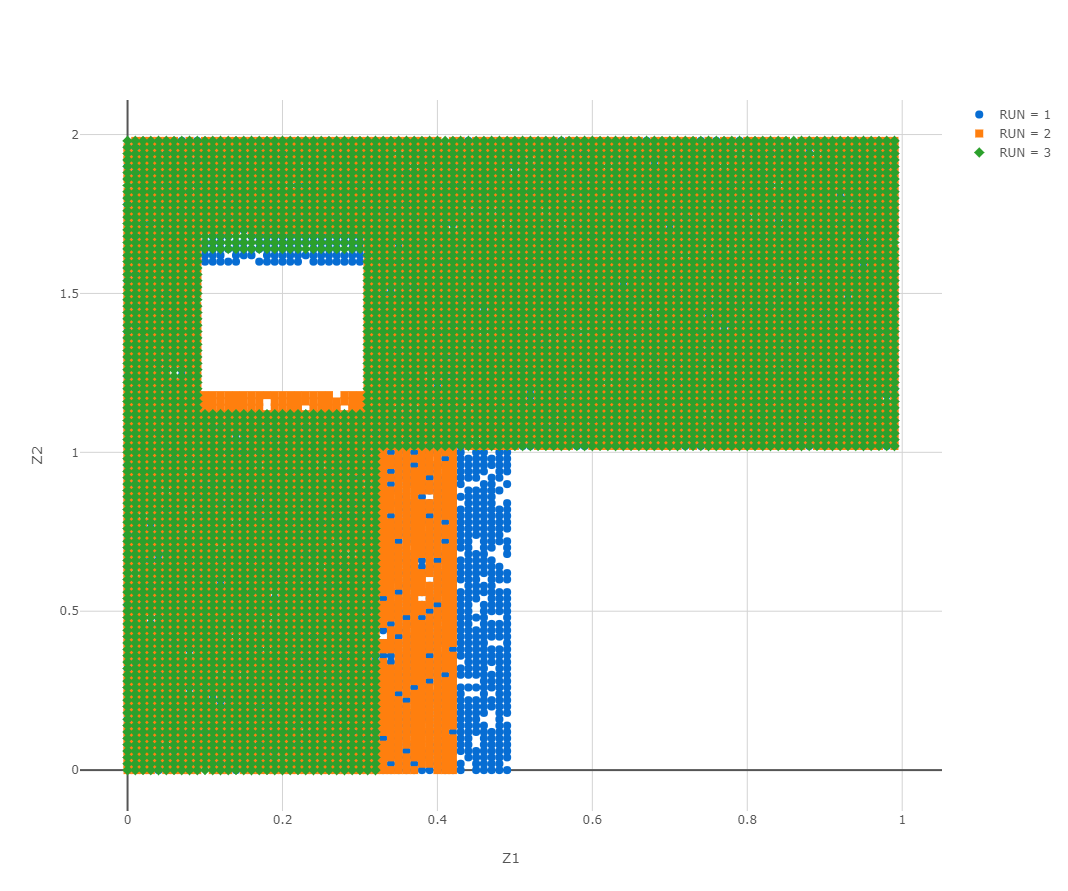Spatial/temporal emulation leverages SmartUQ's functional emulation techniques to capture more functional dimensions. This allows users to build emulators that predict outputs dependent on up to 4-D functional inputs in addition to regular continuous inputs. These types of spatial or field responses are common in all variaties of engineering simulation and test. For example, CFD simulations often calculate pressure vs time and location or temperature vs position, FEA simulations generate stress/strain data on a mesh, and flow experiments produce velocity fields. By directly predicting the response profiles, users can explore design spaces without the need to create summary statistics, preserving more information for analysis.
Simulating domains with related but different geometries is a crucial piece of many workflows. They include geometry optimization, tolerance analysis, calibration to physical measurements, and uncertainty quantification. Depending on what users change between runs in a simulation, the coordinates may change. Anything that changes the simulation domain, e.g., changing the geometry contained within it, will almost certainly change the coordinates.
SmartUQ's Spatial-Temporal Emulator requires that all different sets of inputs utilize the exact same coordinates, i.e., the same number and the same location of spatial coordinates limitting its utility to situations where the topology is the same and coordinates can be transposed.
SmartUQ's Varying Geometry Emulator extends the capabilities of SmartUQ's spatial emulator, allowing users to build and make predictions with kernel-based models using training data with changing geometries and varying coordinates. Users are no longer limited by the requirements to maintain mesh consistency, topology, or geometry. This advancement opens fast and accurate surrogate modeling for all kinds of simulations and test data sets.
Example
 Changing Geometry, Mesh, and Topology
Changing Geometry, Mesh, and TopologySmartUQ's varying geometry emulation technology presents a novel ability to predict field responses on varying geometries opening opportunities in predictive modeling:
To learn more about changing geometry applications, check out SmartUQ white papers and webinars.